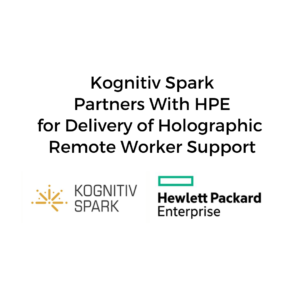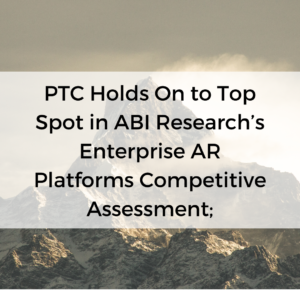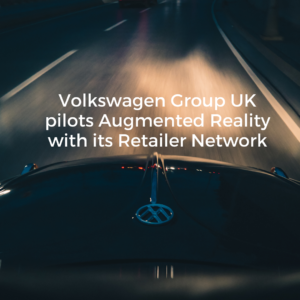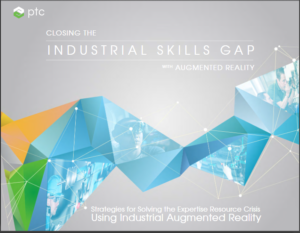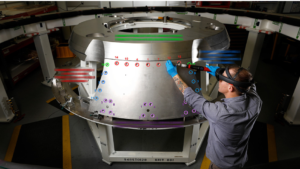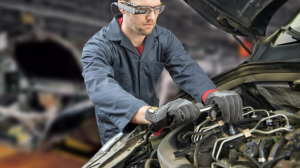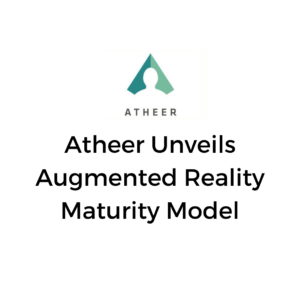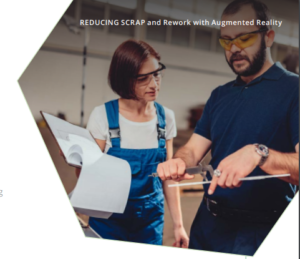The RELS (Remote Expert Live Support) system uses Atheer’s Augmented Reality management platform and RealWear’s HMT-1 head mounted device to connect Retailer technicians to Volkswagen Group UK Technical Support experts based in Milton Keynes.
Using RELS, technicians can get real-time live support, access technical documents with a few simple voice commands, and improve their skills with just-in-time training. RELS is a vital part of Volkswagen Group’s plan to service the 22 million new electric vehicles it plans to produce over the next 10 years.
RELS deployment began with a select collection of Volkswagen Commercial Vehicle Retailers in 2018 and was further expanded to a group of Volkswagen Passenger Car and Audi Retailers that specialise in electric vehicles.
Volkswagen Commercial Vehicles currently use Volkswagen Group UK’s Loan Tool Scheme to deliver the headsets to their Retailers. Using the Loan Tool Scheme, Technical Support Experts can deploy a RELS headset direct to a Retailer via the parts delivery process within 48 hours! Once a RELS call has taken place, the Retailer simply returns the headset using the parts system. Over the coming months, the RELS project will be extended to SEAT & ŠKODA Retailers across the UK.
The introduction of RELS comes at a pivotal moment. In March of 2019, the Volkswagen Group announced plans to launch almost 70 new electric vehicles over the next 10 years – meaning that the projected number of vehicles to be built on the Group’s electric platforms in the next decade will grow to 22 million. The Group’s highly-anticipated new vehicles include the 2019 launched AUDI e-tron, Volkswagen ID.3, ID. CROZZ2, ID. BUZZ ID. VIZZION, as well as the SEAT el-born and the ŠKODA Vision E among others.
Dr. Herbert Diess, CEO of Volkswagen AG, provided a broader context for initiatives like RELS in his recent announcement of Volkswagen’s accelerated introduction of new electric vehicles.
“Volkswagen is seeking to provide individual mobility for millions of people for years to come – individual mobility that is safer, cleaner and fully connected,” he said. “In order to shoulder the investments needed for the electric offensive we must make further improvements in efficiency and performance in all areas.”
How Will RELS Improve The Efficiency Of Aftersales Operations?
The roll-out of electric vehicles represents a generational change for the automotive industry. And Volkswagen Group recognizes the need for an entirely new kind of infrastructure to support 22 million electric vehicles by 2028. This includes everything from redesigned supply chains to a network of fast-charging stations throughout Europe.
These infrastructure changes represent a paradigm shift for aftersales operations.
Volkswagen Group is ready to transform the layout of its service bays to accommodate a new generation of vehicles. The Group is investing in new equipment, procedures, and skills training for its experts and technicians while improving its already high levels of customer service.
RELS supports these changes by providing Volkswagen Group UK Retailer technicians the guidance and real-time support they need for the next generation of electric vehicles. When technicians access the Atheer Augmented Reality Management Platform with RealWear HMT-1 headsets, they become connected workers with instant access to Volkswagen’s knowledge base. The system is intuitive, so anyone can learn to use it just minutes after putting it on.
With the availability of RELS, Volkswagen Group UK electric vehicle experts, based in Milton Keynes, can now provide real-time guidance to connected workers at any Volkswagen or Audi service bay, anywhere in the UK. This will save a tremendous amount of time and money, as experts will no longer need to travel to individual Retailers to complete challenging repairs.
When connected workers use RELS, experts can “see what they see” and respond with appropriate suggestions. This is how RELS will give Retailer technicians the ability to fix new vehicles faster.
Technicians using the Atheer Augmented Reality Platform and RealWear HMT-1 headsets are able to access the right information at the right time. With a few simple voice commands, these connected workers can retrieve technical documents for any vehicle they might encounter, enabling instant knowledge transfer. This way, technicians spend less time searching for paperwork and more time on repairs. Higher efficiency and less time in the shop leads to more customer satisfaction.
How Will Atheer and RealWear Impact Customer Service Within Volkswagen Group UK Retailers?
“We have worked with many teams researching the potential impact of Augmented Reality on their business operations. The Volkswagen Group UK team operating out of Milton Keynes is without a doubt among the best informed, creative, and innovative that we have had the pleasure of working with,” said Amar Dhaliwal, CEO of Atheer. “We are honoured to help Volkswagen Group UK set the bar for customer service of next generation vehicles.”
The team at Volkswagen Group UK is led by Metin Tahsin, Group Technical Support Manager. Metin’s team manages Technical Support and Technical Service Centres, and provides support to all Volkswagen Group UK brands (Audi, Volkswagen, Škoda, SEAT and Volkswagen Commercial Vehicles). It delivers both proactive and reactive support to the Volkswagen Group UK’s five brand networks.
Metin measures the performance of Volkswagen Group UK’s business on key performance indicators relating to performance, volume, speed of response and Retailer satisfaction.
“RELS enables our Technical Service Centre to support Volkswagen Group’s innovative new vehicles with industry-leading customer service, reliability and safety,” he said. “We have seen the power of Augmented Reality and believe it will be a major driver to transform the way we service and maintain the millions of new Volkswagen Group vehicles that will hit in the road the next few years. And we value Atheer’s partnership and the power of the Atheer platform in making this a reality.”
According to Atheer advisor Salim Murr – who led, in succession, the Technical Service Department, Warranty Department, and the Logistics Department at BMW of North America’s U.S. Headquarters – Volkswagen’s forward-thinking approach to Augmented Reality meets a key industry business need.
“The pace of innovation in the automotive industry continues to accelerate and is placing unprecedented pressure on the aftersales operations of Retailers. How do they provide the experience their customers expect while achieving the service margins their business needs? “ he said, “Augmented Reality has the ability to radically and quickly re-orient automotive Retailer service and warranty operations to meet these vital goals.”
The RealWear HMT-1 allows connected workers to access the Atheer platform in a form factor they can wear throughout the day. HMT-1 features an adjustable screen which mimics a 7-inch tablet held at arm’s length. The lightweight HMT-1 headset is totally voice-operated, so Volkswagen Group UK technicians can access the Atheer Augmented Reality Management Platform in any situation, even in noisy service bays, by leveraging the four microphones and advanced algorithms of the HMT-1 to perform noise cancellation prior to voice recognition.
RealWear HMT-1 is drop-proof from a height of 2 meters, and the HMT-1 battery lasts up to 10 hours. This means Volkswagen Group UK technicians can access Atheer’s Augmented Reality Management Platform throughout a full shift without any loss in productivity. Streaming video through the remote guidance features of Atheer’s platform uses more power, but even then a technician can ‘hot swap’ a battery in seconds without losing their place.
“Volkswagen has always been at the forefront of innovation,” said Andy Lowery, CEO of RealWear. “We are proud to partner with Atheer on this milestone initiative to promote Volkswagen’s goals of better customer service and higher-quality aftersales support with HMT-1 and Atheer’s connected worker solutions.”


